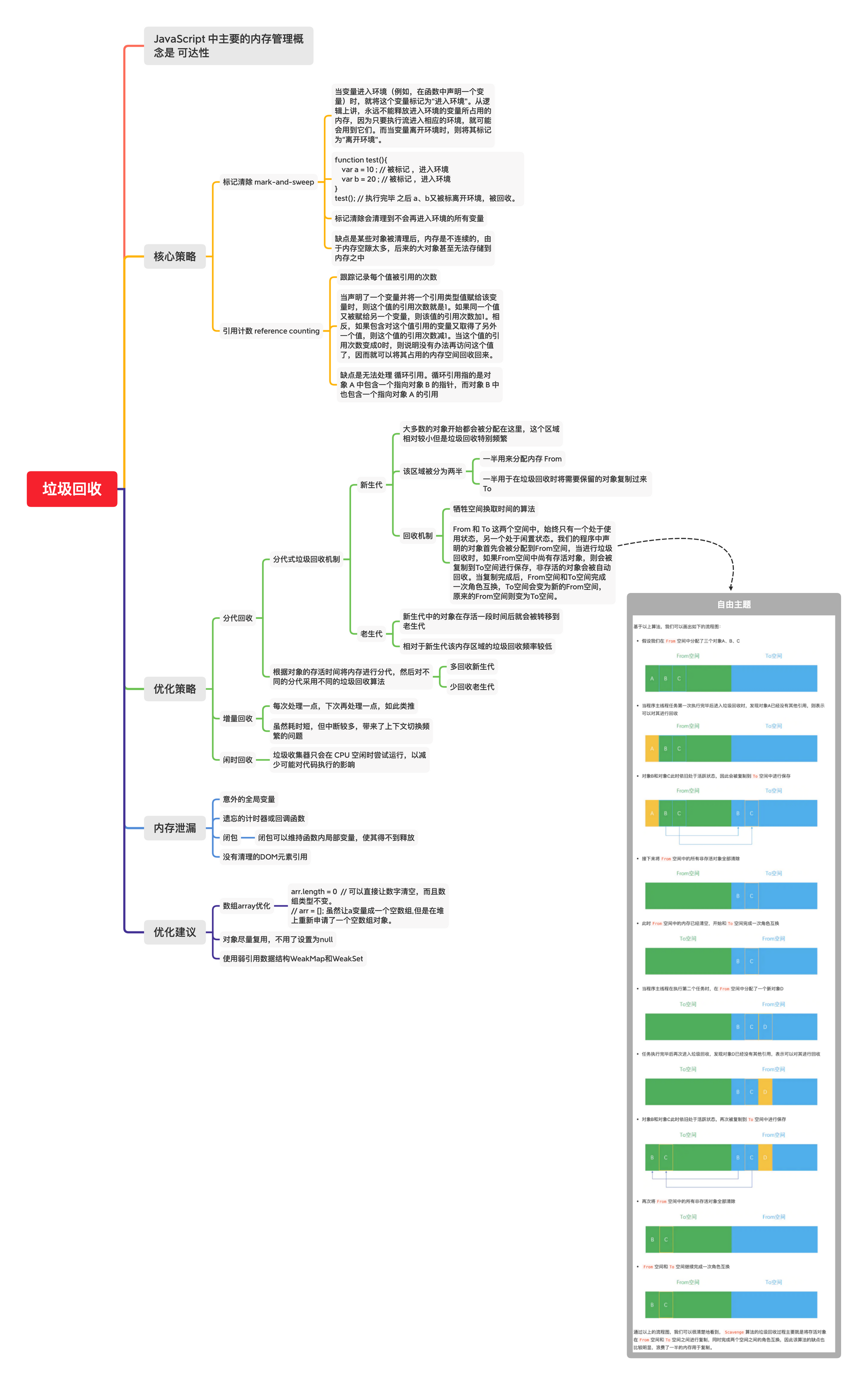# this
this指向
this用于访问当前方法所属的对象,即:跟调用有关!
- 沿着作用域向上找,最近的一个function(不是箭头函数),看这个function最终是怎样执行的;
- this的指向取决于所属 function的调用方式,而不是定义
- function调用一般分为以下几种情况:
- 作为函数函数,即:
fn()- 非严格模式下,指向全局对象(
window) - 严格模式(
use strict)下,指向undefined
- 非严格模式下,指向全局对象(
- 作为方法调用,即:
obj.fn()- 指向最终调用这个方法的对象
- 作为函数函数调用,如:
new Fn()- 指向一个新对象
Fn {}
- 指向一个新对象
- 特殊调用,即:
fn.call()、fn.apply()、fn.bind()- 参数指向成员
- 作为函数函数,即:
// 1. this指向window
console.log(this === window)
// 2. this指向调用它的对象
var obj = {
name: 'hello',
fn: function(){
console.log(this)
}
}
// 情况一: this指向obj
obj.fn()
// 情况二:this指向window
var newFn = obj.fn
newFn()
// 3.
function show(){
console.log(this);
}
show(); // 非 'use strict' 模式下,this最终指向 window;严格模式下,this为undefined
# 结果输出
var length = 10;
function fn() { console.log(this.length) }
const obj = {
length: 5,
method: function(fn){
fn() // 10
arguments[0]() // 3
}
}
obj.method(fn, 1, 2)
当执行 obj.method()时,fn作为第一个参数传入,即:arguments[0] === fn.
根据我们的经验:函数的this指向与它调用方式有关,即:执行 fn()时,this指向 window,同理 this.length === window.length,所以:fn() 打印结果为:10。
对于arguments[0]()我们可以把它理解成:arguments.0(),即:由 arguments调用它。因此,arguments[0]() 打印结果为:3。
class Person {
constructor(name, age) {
this.name = name;
this.age = age;
console.log('this in constructor', this)
}
test() {
console.log('this in obj', this)
}
asyncFn() {
setTimeout(function() {
console.log('this in setTimeout', this)
}, 0)
}
}
const leon = new Person('leon', 18)
leon.test()
leon.asyncFn()
// output
Person{}
Person {}
window
# 垃圾回收机制
垃圾回收机制(GC:Garbage Collecation)
